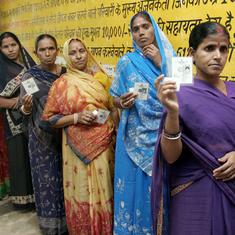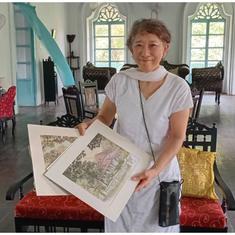I first heard of Nutella through a Canadian housemate while a graduate student in England and, having been a chocolate addict since childhood, was immediately intrigued. There’s a scene in Gentlemen Prefer Blondes where Marilyn Monroe, being handed a tiara, tries to fit it around her waist. When told the piece goes on the head, she breathes, “I just LOVE finding new places to wear diamonds!” Analogously, I love finding new ways to eat chocolate, and spreading it like jam on bread sounded like a fabulous idea. Breakfasts had hitherto escaped my chocolate fixation, and Nutella seemed the perfect way to rectify that failing.
I ate it almost every day during an eight-week stay in Germany, and still pronounce it the German way, nootella with a hard ‘t’, thanks to then-ubiquitous television commercials featuring Boris Becker. Becker created in German minds an association between the product and sportiness, standard marketing strategy for fatty, sugar-laden foods aimed at children. The tennis star helped establish Germany as Nutella’s largest market, though I suspect the product’s success is also attributable to dense, dark German breads, which go very well with the spread, adding their own flavour profile instead of being dominated by it the way white breads are. In Italy, all bread is white and boring, and some of it, being baked without salt, is so vile as to be beyond rescue even by Nutella.
Search for the recipe
Chocolate is unique in being a commodity whose basic ingredients grow in hot countries but which is best manufactured and consumed in temperate regions. It is a product of colonialism, the first wave of globalisation, and the industrial revolution. Cocoa beans originated in the Amazon rainforest, and have been cultivated in Central America for 3,000 years, but were never paired with sugar until the Spanish began doing it to counteract the bitterness of brewed cocoa. Three hundred years later, a Dutchman named Coenraad van Houten created solid chocolate by removing cocoa butter from the mix and then reintroducing it in modified form. Europeans planted cocoa in Africa and sugarcane in the Americas to meet growing demand as the world developed a sweet tooth. Nutella sources its cocoa beans from Nigeria, its sugar from Brazil, and recently replaced hydrogenated vegetable oil with Malaysian palm oil. This change eliminated trans fats, making the spread a little less unhealthy, but put more pressure on the world’s rainforests. There’s no such thing as a free breakfast.
Chocolate was for centuries a luxury (it still is in countries like India), and Europeans can be very snooty about it. For over 25 years, British and American brands such as Cadbury and Mars were prohibited from calling themselves “chocolate” on the continent because they had a high milk content and used vegetable oil rather than pure cocoa butter. A compromise was finally reached whereby these products could refer to themselves as “family milk chocolate”. Nutella cannot call itself a chocolate spread either, having been born not of luxury but of two phases of deprivation.
The first came during Napoleon’s embargo in the early 1800s, which sent cocoa prices soaring. Inventive Italians found that locally grown hazelnuts could be used to stretch cocoa, in a manner similar to the addition of chicory to coffee. After the Second World War, when chocolate was rationed, a confectioner named Pietro Ferrero created a “loaf” of chocolate-hazelnut paste that could be sliced and eaten with bread. His son Michele tinkered with the recipe for years, adding vegetable oil to make the product easy to spread, and eventually launching it under the name Nutella in 1964. Within the European Union, it is called hazelnut cream because cocoa powder forms only about 8% of the confection, well below EU standards for chocolate.
Cross-border obsession
Chocolate or not, the formula Michele Ferrero finally settled on has never been bettered. Dozens of wannabes have entered the fray, with every major confectionary producer trying to match the category leader, but all have fallen short. The latest attempt was made by Hershey in the United States, after chocolate spread became the fastest growing item in the jams, honeys and spreads industry. But despite the company’s marketing prowess it has so far failed to dent Nutella’s share, which remains comfortably over 70%, as it does in virtually every nation in which it is sold. No competitor sells even 10% as many jars as Nutella worldwide. I cannot think of another brand which introduced an entirely new class of consumer product and has stayed so dominant in a consistently growing market for so long. Consider, by way of comparison, that Apple’s share of the tablet market is now below 30%.
I have tried spreads from cheap to gourmet, from Cadbury to Godiva, believing it must be possible to dream up a better recipe. After all, Nutella contains too much sugar, too little cocoa, no real vanilla, and is stickier than one’s idea of a perfect spread. Without the constraints faced by the post-war Italian economy, it ought to be easy to create a more luxurious, sophisticated, product. Yet, Nutella always proves more satisfying than creamier, more chocolate-y rivals. Its thick stickiness endows it with a luscious, rounded flavour that leaves behind a pleasantly mellow aftertaste. Other spreads tend to be too abrupt, too much like melted bars of chocolate rather than distinct creations.
Nutella exudes a sense of friendly well being, illustrated by the only mildly interesting personal story I can tell related to it. Before the Schengen visa system came into force and before there were any budget airlines, my girlfriend and I backpacked in Europe, travelling from Paris to Florence by bus. We got to the Italian border up in the Alps in the wee hours, and were woken at passport control. The two of us, the only dark-skinned individuals on the vehicle, were duly instructed to alight for a luggage check. The border guard muttered about drugs as he went through our backpacks. Then, an 800-gram jar of Nutella tumbled out from its protective sheath of T-shirts and underwear. The guard held it up, and his mood was transformed. He smiled at us, said something that made his colleague smile as well. Barely a minute later, he signalled us to pack our belongings and get back on the bus.










